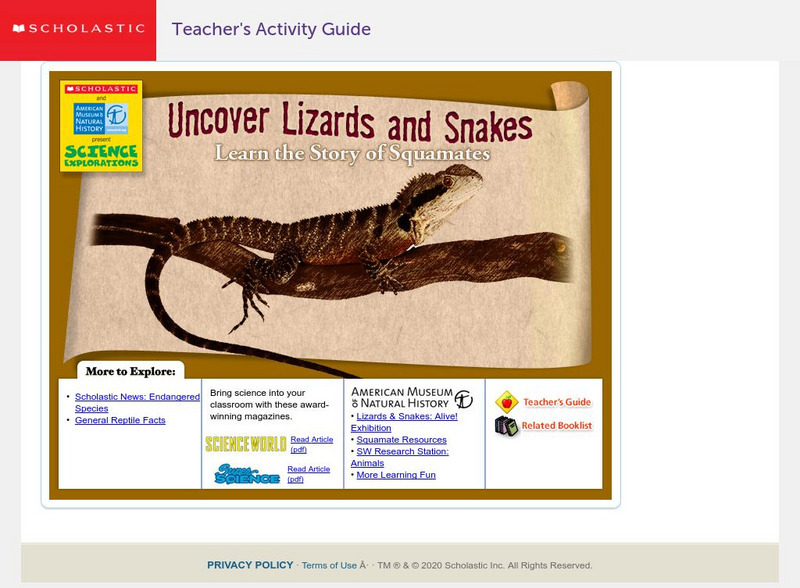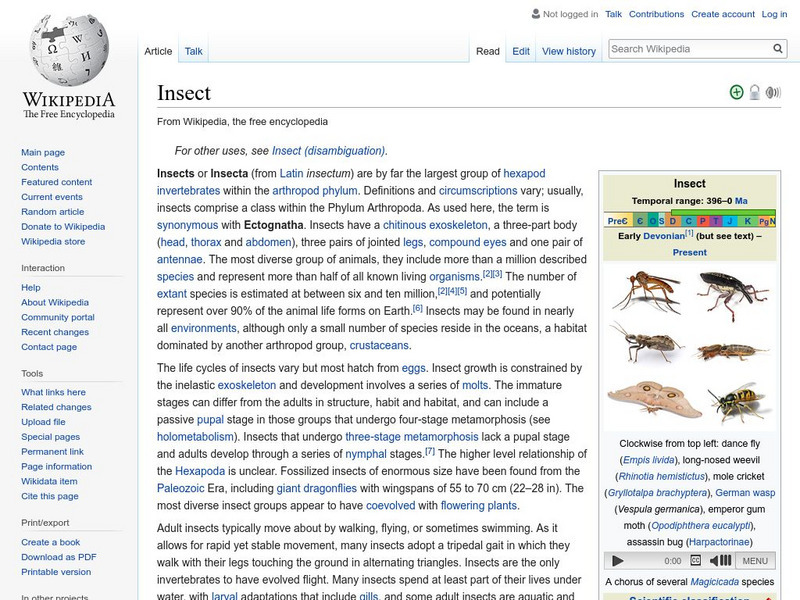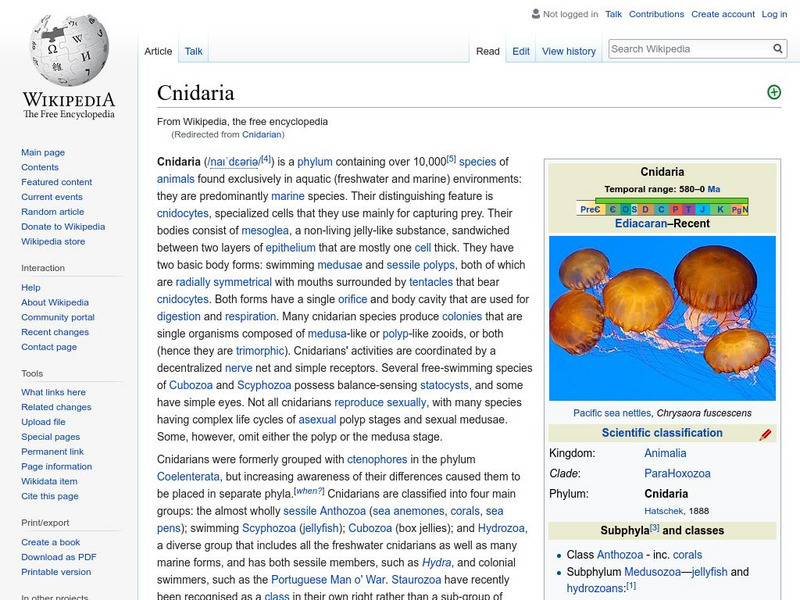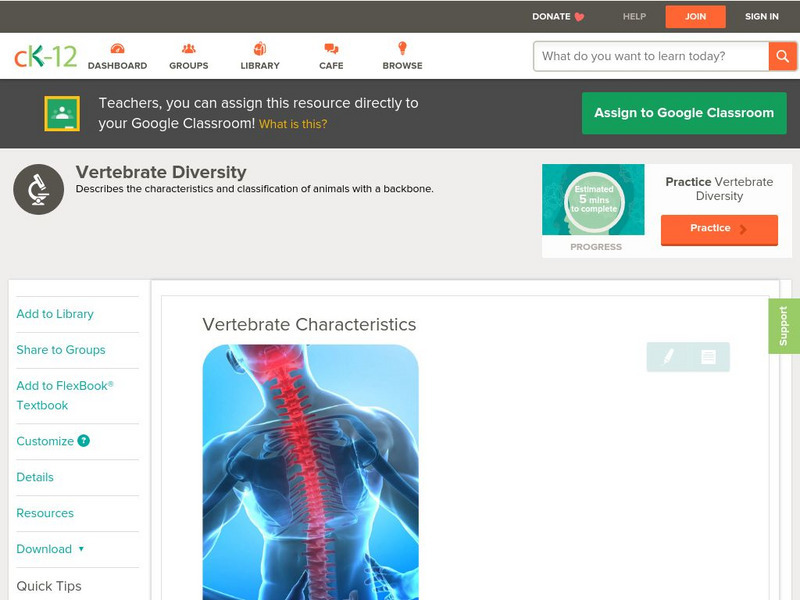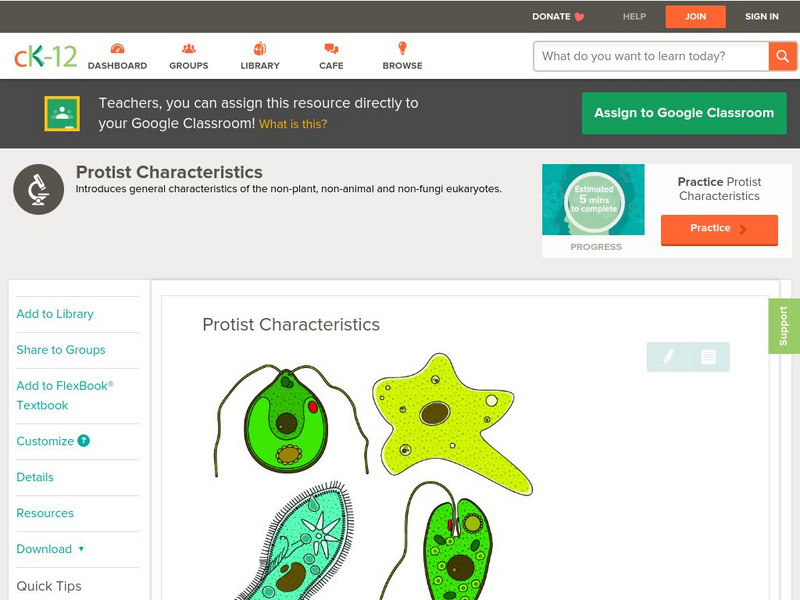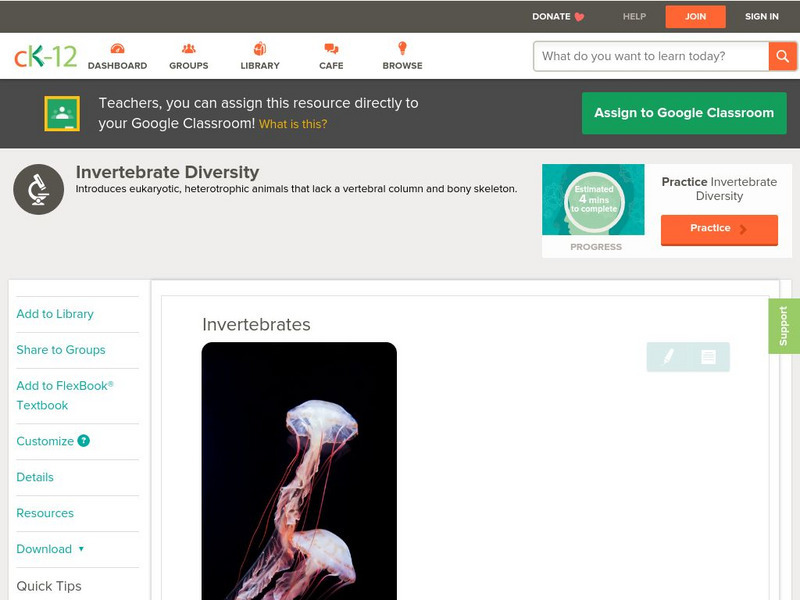Quia
Quia: Animal Classification
Use this website to test your knowledge of which animals belong to which groups.
California Institute of Technology
Infrared Zoo Lesson 1: A Trip to the Infrared Zoo
Students will use infrared images to classify different animals. Students will learn more about infrared imaging and the information it can reveal. This activity is guaranteed to activate great class discussion.
Wikimedia
Wikipedia: Arthropod
Wikipedia offers information on arthropods, the largest phylum of animals. Includes scientific classification chart and image.
Scholastic
Scholastic: Science Explorations: Uncover Lizards and Snakes
An exploration of squamates, or scaled reptiles. Take notes about lizards and snakes using the pdf "Squamate Chart" while viewing a slideshow, investigate the squamate anatomy and how squamates differ from other animals, such as insects...
Khan Academy
Khan Academy: Animal & Human Viruses
Learn about viruses of humans and other animals, the Baltimore classification system, and the HIV life cycle.
University of Michigan
Critter Catalog: Myriapods
This informative site provides a description of the characteristics of Myriapods. Local animals (southeastern Michigan) in these groups are then examined in further detail. Pictures and classification groupings are included in this site.
Countries and Their Cultures
Countries and Their Cultures: Anuak
The Anuak live in a region straddling the border of the southern Sudan and Ethiopia. The Anuak language is most closely related to Shilluk. Together, the two languages comprise a subfamily within the larger classification of Nilotic....
Read Works
Read Works: Classify and Categorize 3rd Grade Unit
[Free Registration/Login Required] A three-lesson plan unit on classifying and categorizing through which students learn how to categorize information to answer research questions and then to organization that information into an...
Read Works
Read Works: Classify and Categorize 4th Grade Unit
[Free Registration/Login Required] A three-activity unit on classifying and categorizing through which learners learn how to organize research into an outline, use text features to locate information, and write a research report. Lessons...
Wikimedia
Wikipedia: Insects
Wikipedia offers detailed information on insects, invertebrate animals of the class Insecta.
Wikimedia
Wikipedia: Cnidaria
Wikipedia offers great information on Cnidarians, a phylum of animals including coral, sea anemones, jellyfish, sea pens, sea wasps, and more.
Wikimedia
Wikipedia: Sponge
Wikipedia offers detailed information on sponges, or poriferans, animals of the phylum Porifera.
Other
The Antlion Pit: A Doodlebug Anthology
Outlines the physical characteristics of the antlion order, Neuroptera. Identify them by their size, relationships with other animals, and about the antlion's role in certain cultures.
Biology 4 kids
Biology4 Kids: Sponges the First Invertebrate
Find out about some the most simple organisms in the Animal Kingdom, the sponges.
CK-12 Foundation
Ck 12: Life Science: Vertebrate Characteristics
[Free Registration/Login may be required to access all resource tools.] Vertebrates are animals with backbones. These include fish, amphibians, reptiles, birds, and mammals. Learn more about vertebrate characteristics in this learning...
CK-12 Foundation
Ck 12: Life Science: Protist Characteristics
[Free Registration/Login may be required to access all resource tools.] Protists are eukaryotes, which means their cells have a nucleus and other membrane-bound organelles. Most protists are single-celled. Other than these features, they...
CK-12 Foundation
Ck 12: Life Science: Chordates
[Free Registration/Login may be required to access all resource tools.] Did you know that fish, amphibians, reptiles, birds, and mammals are all related? They are all chordates. Chordates are a group of animals that includes vertebrates,...
PBS
Pbs Nature: Spider
There are about 35,000 known species of spiders in the world and this research resource site surveys these animals in text and images.
University of Illinois
University of Illinois Extension: Urban Text: Adventures of Herman the Worm
WORMS- What are they? Where did they come from? If you are interested in Herman the Worm's family tree (biologically speaking), his body structures, or all the facts about him that you'll ever need, go to "The Adventures of Herman the...
Science Education Resource Center at Carleton College
Serc: Introduction to Dichotomous Keys
This lesson serves as an introduction to the classification of plants and animals or trees. Students will investigate how to classify objects based on their similarities and differences. They will use technical writing to explain their...
CK-12 Foundation
Ck 12: Life Science: Invertebrates
[Free Registration/Login may be required to access all resource tools.] Animals are also often identified as being either invertebrates or vertebrates. These are terms based on the skeletons of the animals. Vertebrates have a backbone...
Science Education Resource Center at Carleton College
Serc: Interdependence of Life: How an Ecosystem Responds to Change
In this biology field investigation, learners will investigate the site of an environmental disturbance, identify plant and animal life within that specific area, and compare it to an adjoining forested area. Students will map both areas...
Defenders of Wildlife
Defenders of Wildlife: Fact Sheets
Here you can find fact sheets on over 50 species of animals. Find an animal by where it lives in the world, and learn all about it.
Sea World Parks & Entertainment
Animal Bytes: African Cape Buffalo
Provides users with a concise list of information helpful to anyone wanting to know more about these South African ungulates. Contains scientific classification of these animals, fast facts, fun facts as well as additional information on...
Other popular searches
- Taxonomy of Animals
- Animals Classification
- Classification Animals Virus
- Taxonomy of Animals Saluki
- Animals Classification Chart
- Taxonomy of Animals Salk
- Plants Animals Classification



